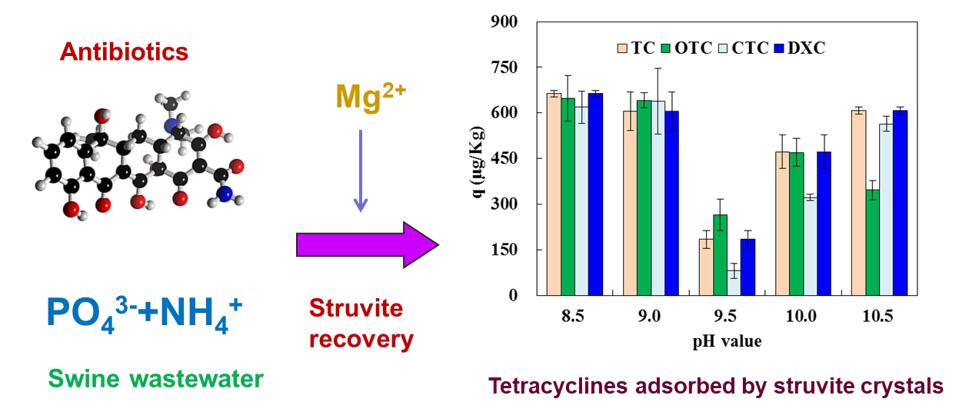Recovering phosphorus from the livestock wastewater and digestive sludge supernatant is one of the important means to alleviate the shortage of phosphorus resources globally. Among various phosphorus recovery methods, struvite (MgNH4PO4.6H2O) crystallization is popular and widely used due to its fast reaction rate, high recovery efficiency, and the recovered solids are regarded as a high-quality fertilizer with slow-release rate. However, the high-strength residue of antibiotics in the recovered products leads to the spread of antibiotics and resistance genes in the environment, which causes potential harm to the ecological environment and human health.
The researchers in the Institute of Urban Environment, Chinese Academy of Sciences conducted a study on investigating the behavior of antibiotic migration in the process of struvite recovery from wastewater with complex physical functions and chemical reactions. The results revealed that the struvite crystallite adsorbed the antibiotics since the hydrated Mg ion on the crystallite surface could complex with the antibiotics by electrostatic adsorption. The adsorption process could be divided into three stages, including rapid adsorption, fluctuation and stability, respectively. Dissolved organic matters (DOM) are an important factor influencing antibiotic migration. During struvite crystallization, DOM underwent hydrolysis and aggregation and precipitation. Hydrolysis led to the redistribution of antibiotics in different DOM components, whereas aggregation promoted antibiotic adsorption significantly. The research clarifies the mechanisms and relevant factors that affect antibiotic transport in struvite recovery, which provides scientific basis for identifying the potential risk of antibiotic residue in the recovered products and for developing control technologies for phosphorus recovery from wastewater. The outcomes were published in Water Research (2018, 134, 311-326), Chemical Engineering Journal (2017, 313, 1633-1638) and Journal of Cleaner Production (2018, 201,678-685).

Figure 1. Antibiotic transport in the process of struvite recovery from wastewater